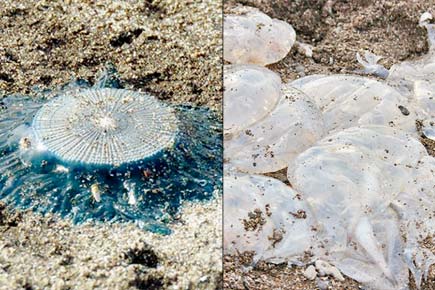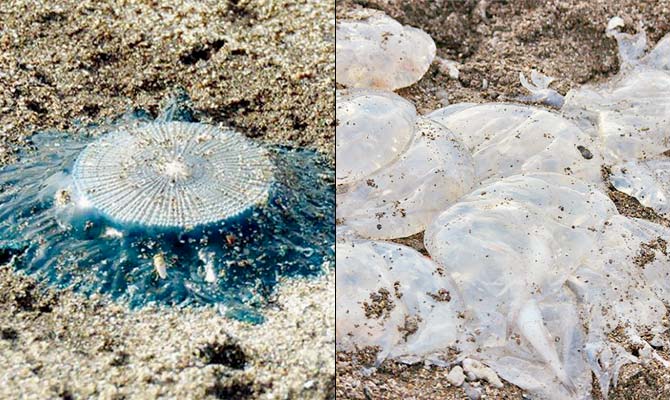MY FASCINATION for the secrets of the ocean is unlimited. It is intriguing how life evolved under this watery expanse, which covers over a third of our planet


Porpita porpita are jellies with cobalt blue tentacles; Jellyfish are commonly found in coastal zones
ADVERTISEMENT
 MY FASCINATION for the secrets of the ocean is unlimited. It is intriguing how life evolved under this watery expanse, which covers over a third of our planet. But, it’s equally shocking and sad that not even a fraction of the conservation research fraternity focuses on demystifying the stories of these submarine creatures. Maybe, the reasons why life evolved underwater are clearer now. But, even today, we know very little about their courtship rituals, survival strategies, modes of communication, hunting techniques, camouflage and reproductive adaptations.
MY FASCINATION for the secrets of the ocean is unlimited. It is intriguing how life evolved under this watery expanse, which covers over a third of our planet. But, it’s equally shocking and sad that not even a fraction of the conservation research fraternity focuses on demystifying the stories of these submarine creatures. Maybe, the reasons why life evolved underwater are clearer now. But, even today, we know very little about their courtship rituals, survival strategies, modes of communication, hunting techniques, camouflage and reproductive adaptations.
This dark and silent zone is not for the weak-hearted as one needs to brave strong currents, darkness and high water pressure, besides a plethora of dangerous animals. So, it may seem suicidal that with a mortal fear of deep waters, I keep returning to explore the secrets of this amazing underworld.
You may think it to be a play of words when I refer to these submarine creatures as the underworld of all life forms. But, if you study these wild creatures, you will realise that they possess far more lethal venoms and toxins than any terrestrial creature. We should be glad that we don’t come in contact with these morbid hunters.
Unfortunately, coastal dwellers, such as we Mumbaikars cannot keep ourselves away from the beaches. In fact, we dive deep into the playground of these underworld dons. Just last week, the BMC issued a public warning about the mass-bloom of jellyfish and blue buttons on our beaches. Jellyfish are a major non-polyp (colony) form of creatures belonging to Phylum Cnidaria, found in every ocean. They are probably the world’s oldest multi-organ, free-swimming marine animals roaming the seas since 500 to 700 million years. Their body consists of a gelatinous umbrella-shaped bell, which pulsates for locomotion with a ring of trailing stinging tentacles of various lengths, used to capture prey.
Most jellyfish do not have specialised digestive, central nervous, respiratory or circulatory systems. However, they possess specialised stinging cells called nematocysts on tentacles and swimmers stuck in a jellyfish swarm could die due to multiple stings. Most jellyfish have ocelli, primitive light-sensitive organs that can help to determine up from down, responding to the sunlight shining on the water’s surface.
However, box jellyfish have 24 eyes, two of which are capable of seeing colour, and four parallel information processing areas or rhopalia that act in competition. This makes the box jellyfish one of the few creatures to have a complete 360-degree view of its environment. They look upward to navigate from roots in mangrove swamps to the open lagoon and back, watching for the mangrove canopy, where they feed.
The name jellyfish is actually a misnomer, as they are invertebrates, unlike true fish that are vertebrates. Hence, the terms jellies or sea jellies used commonly by public aquariums is more appropriate. Large, often colourful jellyfish are common in coastal zones worldwide. Porpita porpita or blue buttons are jellies with short cobalt blue tentacles that leave a tingling sensation when they sting. Though they form a major food base for sea turtles, plastic waste, sewage and plaster of paris (PoP) from idols are threatening these ancient marine dons.
Write to Anand at sproutsenvttrust@gmail.com
 Subscribe today by clicking the link and stay updated with the latest news!" Click here!
Subscribe today by clicking the link and stay updated with the latest news!" Click here!







